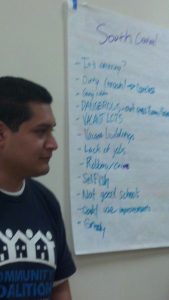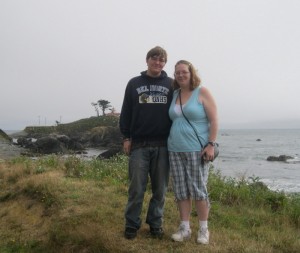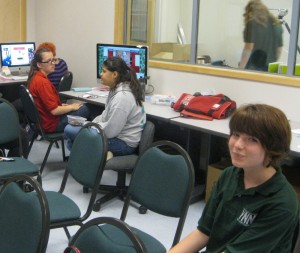
This photo, taken in Feb. 2013, shows the thick undergrowth that’s blocking healthy growth of hazel on Yurok tribal lands in Northern California.
The forests on the Yurok tribal lands in Northern California look like weed-choked, overgrown gardens, as one tribal member described it.1
After years of fire suppression – in an ecosystem that needs fire to regenerate – the forest is filled with underbrush that crowds out desirable plants used for basket making, medicines and food. And many of the vast meadows that once blanketed the hills are gone.
Before European contact, the Yurok’s forests were cleared of underbrush by periodic fires, allowing elk and other animals to move freely, and the Yurok used controlled burns to keep trees and bushes from encroaching into meadows, where important plants grew and animals grazed.
But over the past century timber companies began planting monocultures of conifers not only on clearcut forests but on former prairies.1 The rest of the meadowland was lost and the forests became overrun with undergrowth due to state and federal government fire suppression policies.
The result: A reduction in game and in many plants species critical to the preservation of Yurok culture.
But Del Norte County and its adjacent tribal lands in 2010 joined a statewide, $1 billion community transformation initiative funded by the California Endowment, which seeks to leave 14 California communities far healthier in 10 years. One key lever of change in this initiative is to ask community members what they most want to change, rather than the outside funder dictating terms. And then organizing members into a strong force for change.
Skip Lowry, whose mother is Yurok, led a nine-month “listening campaign” among Yuroks and non-Indians living in and around the tribal lands, which surround the Klamath and Trinity rivers. At the end, the community chose prescribed burns as the chief priority for restoring peoples’ health.
That’s not surprising to Dr. Susan Cameron, a Navajo/Hispanic scholar who works in the education department at the Smithsonian’s National Museum of the American Indian in Washington, D.C. She said Native Americans’ sense of well being is intrinsically linked to the preservation of their culture and community.
“Health can only be rooted in your community. There’s no other way it can be,” Cameron said. And much of what children need to learn to keep the Yurok culture alive, she noted, comes from a healthy forest.
“Since time immemorial the Yurok community honored and obeyed natural rights, true ‘laws of the land,’ which our culture depended on for the continuation of the blood of our people,” noted Lowry in a July 2012 article in Yurok Today. “And only within that culture will we find the balance and harmony once again.”
The organizing campaign, funded by the California Endowment, led to the creation of the Klamath-river Local Organizing Committee, or KLOC, in April 2012. In April 2013, the Yurok tribe will start a managed burn on five acres where overgrown

These hazel shoots are twisted and bent from too much nearby plant growth. They need to grow straight for basket making and many other uses. The controlled fire will clear out the unwanted bushes and allow the hazel shoots to grow unimpeded.
bushes have caused prized hazel plants to send out twisted and bent shoots in order to avoid other plants. The Yurok need straight shoots for a variety of ancient uses, including making baskets, baby rattles and eel traps.
In a few weeks, I’ll post photos of the burn in progress. Photos taken by Melissa Darnell, the lead community organizer for the initiative in Del Norte County and the Yurok tribal lands, in this post show the site before and after preparation for the burn.
TAKEAWAY: Native American cultures have always known that health is intrinsically linked to your community and surroundings, a reality gradually coming to light in Western cultures.
—
1. Community plan catches fire: KLOC, Tribe partner to come up with 10-year cultural burn program. Yurok Today, July 2012. www.yuroktribe.org/documents/2012_july.pdf












